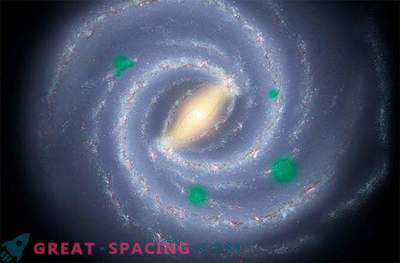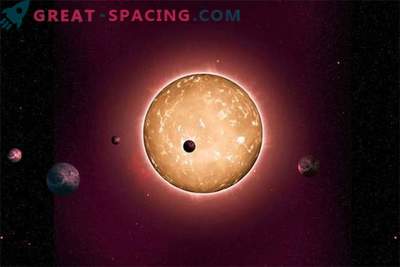
In February, NASA announced the discovery of a solar system with 7 planets, 3 of which could be habitable. From that moment on, the scientist Sebastian Kriyta began to ponder the question: if life had originated on one of the planets, then is there a chance that with the help of cosmic debris it spread to the other.
The study found that life forms, such as bacteria or unicellular organisms, can travel through the unusual TRAPPIST-1 system. This is a rather tempting goal for those who want to find extraterrestrial life.
“It is likely that material exchange is possible between densely located planets in the TRAPPIST-1 system,” says Kirit. “And if there was life in the wreck, then it could“ infect ”a new planet.”
For this to happen, an asteroid or comet must strike one of the planets, launching debris into space. Moreover, the fragments must be large in order to survive a space journey. The ejection velocity is also important, since it is necessary to overcome the gravitational attraction of the planet. But it should not be too fast, otherwise it will destroy life forms. And the journey must fit in a short time for the body to survive.
Researchers conducted several simulations for TRAPPIST-1 and found that this process can occur over a period of up to 10 years.

The probable surface TRAPPIST-1f is one of 7 newly discovered exoplanets the size of Earth.
“Since dense systems with planets are a common phenomenon, we can rethink the process of transferring life not only in this system, but also in others,” said Fred Chesla, a professor of geophysical sciences and co-author of the article. “We must think about the planetary systems as a whole, and not about specific planets.”
Number of exoplanets detected
The first exoplanet was confirmed in 1992. Today, more than 3,600 candidates for exoplanets have been found, and there are at least 3,000 additional objects in line. In addition, over 600 multiple exoplanetary systems have been confirmed.
The science of exoplanets is gaining strength and popularity. And you have to make a start from our system and are surprised to find models where, for example, there are two suns or other features. But now it is important not only to look for new exoplanets, but to understand the process of their formation and evolution.
Exoplanetary systems are laboratories that help to better understand the solar system. 40,000 tons of space debris falls on Earth annually, so it is likely that some life forms are strong enough to survive a space trip.











































